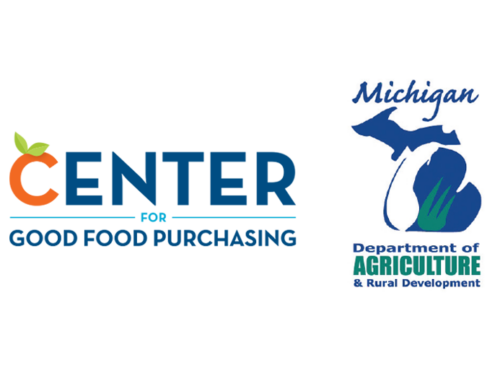Equity in Our Food System
The inequities that exist in our food system are unacceptable, and a failure to act now passes those health, economic, and environmental injustices onto future generations. Institutions that purchase and serve large quantities of food, such as schools, prisons, hospitals, and nursing facilities, have the power to address these inequities—enough to achieve real, population level transformative outcomes.
Systems transformation means changing or redesigning systems, such as a food system, to shift the conditions that hold a problem in place. Transformational work can be daunting, however the Community of Solutions and Community of Transformation frameworks—from our partners at 100 Million Healthier Lives and Well Being in the Nation Network—offer useful foundations through which to think about transforming systems for well-being and equity.
Our food system institutions are set against a backdrop of dual, ongoing epidemics of food insecurity and obesity. These issues disproportionately impact people of color and low-income people. Institutions can act as stewards with equitable procurement practices, such as those that are the pillars of the Center for Good Food Purchasing: emphasize local economies, environmental sustainability, valued workforce, animal welfare, and nutritious, protective foods. Business also has a large part to play in making sure employees and the communities they serve have nutritious health food.
Food system workers are disproportionately women, people of color and immigrants. Inequities affecting food system workers range from issues of fair and living wages, to worker health and safety, sick and family leave, and entrepreneurism and business ownership. Institutions themselves can emphasize fair labor practices, and by prioritizing procurement and contracting with women- and minority-owned firms.
Conventional agricultural and animal rearing practices have produced environmental injustices including exposure to carcinogens and other toxics, land and water contamination, and water rights and access—with farmworkers, and rural, immigrant, and indigenous communities experiencing the deepest inequities. Institutions can create procurement policy that prioritizes fair and safe labor practices; and small-scale, organic, no-till, regenerative production methods.
Public schools play a major role in providing essential meals for children from all backgrounds, with the National School Lunch Program serving nearly 30 million students each day. For many students from low income families, students with disabilities, and foster youth, school meals are essential, nutrient-filled, and reliable sources of food. Schools and school districts can act as stewards by working to expand meal programs and address child food insecurity, through programs such as school breakfast programs, summer food programs and universal lunch programs.
Colleges, Universities, and other major institutions have large populations and significant reach to the people they serve. Several examples exist of institutions using economies of scale to purchase excess produce at affordable costs for distribution to their populations via produce box and other produce vending programs. Some evidence suggests that family access through such programs and family-centered educational programming improve family nutrition.
Food is big business with a long history of putting profit above people through practices that exploit workers and degrade natural resources. Advancing an equitable food economy is part of a broader movement to advance a well-being economy that centers people and planet. This can include support for women and minority-owned farms and businesses across the food chain, patronizing unionized businesses, worker-owned cooperatives, and businesses that provide living wages, and backing movements toward a green economy and green economic development.





